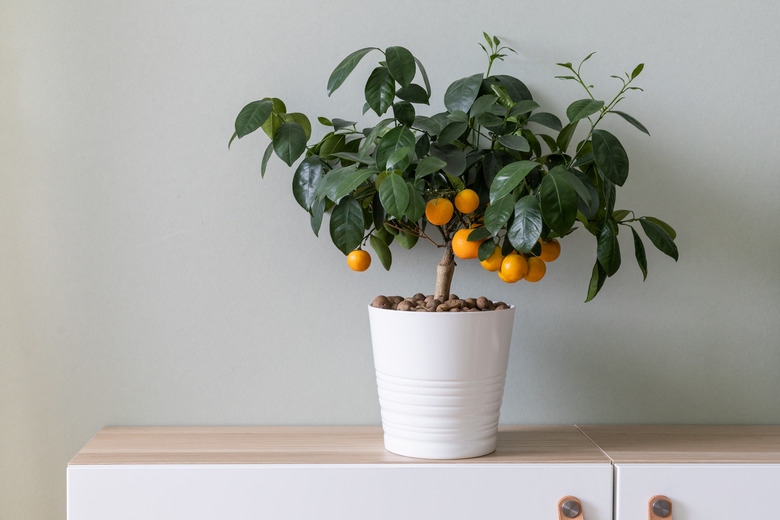How To Stop A Tree From Growing
We may receive a commission on purchases made from links.
You can't actually stop a tree from growing because it would die. Having said that, you can prune the branches to keep a tree small or reduce its size, constrict the roots in a pot to slow its growth, or choose a tree that's naturally small to fit the space available. In addition, special growing methods, like espalier and bonsai, allow you to grow trees in minimal space with maximum results.
Choose a Small Tree
Choose a Small Tree
When selecting a new tree for a space, measure the area, determine the amount of sunlight, and decide on the purpose of the tree. Also, look up and check for overhead power, cable, or telephone lines. Whether you're looking for shade, flowers, fruit, or fall color, the available light and space plus the mature size of the tree should be the determining factors in your choice of species and cultivar.
Naturally small trees and trees grafted onto a dwarfing rootstock grow to a maximum height and width and then stop growing. They still need water, fertilizer, and the appropriate amount of light to thrive but are unlikely to outgrow their space.
Plant in a Container
Plant in a Container
To keep a tree small, constrict its growth by planting it in a container. An 18- to 24-inch-wide planter gives the roots room to absorb moisture and nutrients, but the limited space stunts the tree's growth. This also allows you to grow trees outside of their normal hardiness zones, such as a Meyer lemon tree (Citrus × meyeri), hardy in U.S. Department of Agriculture plant hardiness zones 9 through 11. When the weather turns cold, these naturally small trees can be moved indoors to a warm sunroom or sunny window.
Train a Tree
Train a Tree
In addition to choosing naturally small, dwarf, or semidwarf trees, consider a specialty growing method. Espalier allows you to grow a flowering, fruiting, or foliage tree in a relatively flat form by using a wire trellis or fence as a support. Your tree can be attached to the support and pruned to a fan, cordon, diamond-shaped Belgian fence, or other form that suits your taste and the space available.
Alternatively, consider practicing the Asian art of growing trees in shallow containers. Trees that are naturally large can be maintained at a few inches tall for many years. Bonsai is a stylistic representation of the tree, while penjing consists of one or more tiny trees in a more natural landscape. Both require careful monitoring to ensure the trees receive enough water, nutrients, and light, and they need regular root and branch pruning to keep the trees in tiny and visually appealing forms.
Prune to Control Size
Prune to Control Size
Whether dwarf, semidwarf, or standard, trees require pruning to maintain the desired size and form. Pinch back or rub off growth that appears below the graft or from the roots, trim as needed, and prune the tree as it grows and matures to keep it from outgrowing its allocated space.
Mature trees can also be pruned to reduce their size; prune in late winter or early spring when the tree is dormant. Never remove more than one-quarter of the tree's canopy or you risk killing the tree. Topping a tree is also risky, as the tree will produce new branches from the pruned stubs and trunk, but they will be weaker and will break easily in high winds and storms.
Remove and Replace
Remove and Replace
Mature trees that have outgrown their space require a significant amount of time, effort, and money to reduce their size and then keep them small. In addition, trees that naturally grow in a pyramid shape, such as conifers, cannot be satisfactorily pruned to reduce their size. Depending on the tree and location, removing the tree and replacing it with a smaller tree is often the budget-friendly method of maintaining your landscape.
